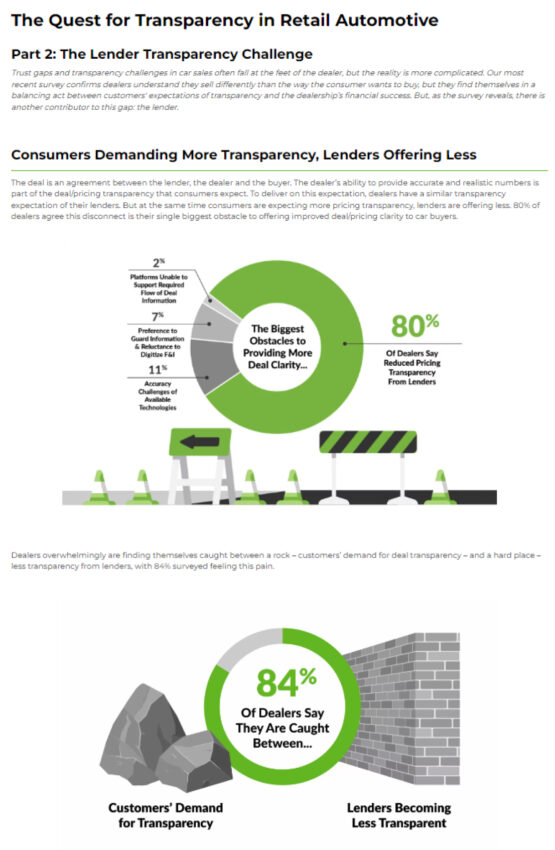The Quest for Transparency in Retail Automotive (Part 2)
DOWNLOAD INFOGRAPHICIn this article
The Quest for Transparency in Retail Automotive
Part 2: The Lender Transparency Challenge
Trust gaps and transparency challenges in car sales often fall at the feet of the dealer, but the reality is more complicated. Our most recent survey confirms dealers understand they sell differently than the way the consumer wants to buy, but they find themselves in a balancing act between customers’ expectations of transparency and the dealership’s financial success. But, as the survey reveals, there is another contributor to this gap: the lender.
Consumers Demanding More Transparency, Lenders Offering Less
The deal is an agreement between the lender, the dealer and the buyer. The dealer’s ability to provide accurate and realistic numbers is part of the deal/pricing transparency that consumers expect. To deliver on this expectation, dealers have a similar transparency expectation of their lenders. But at the same time consumers are expecting more pricing transparency, lenders are offering less. 80% of dealers agree this disconnect is their single biggest obstacle to offering improved deal/pricing clarity to car buyers.
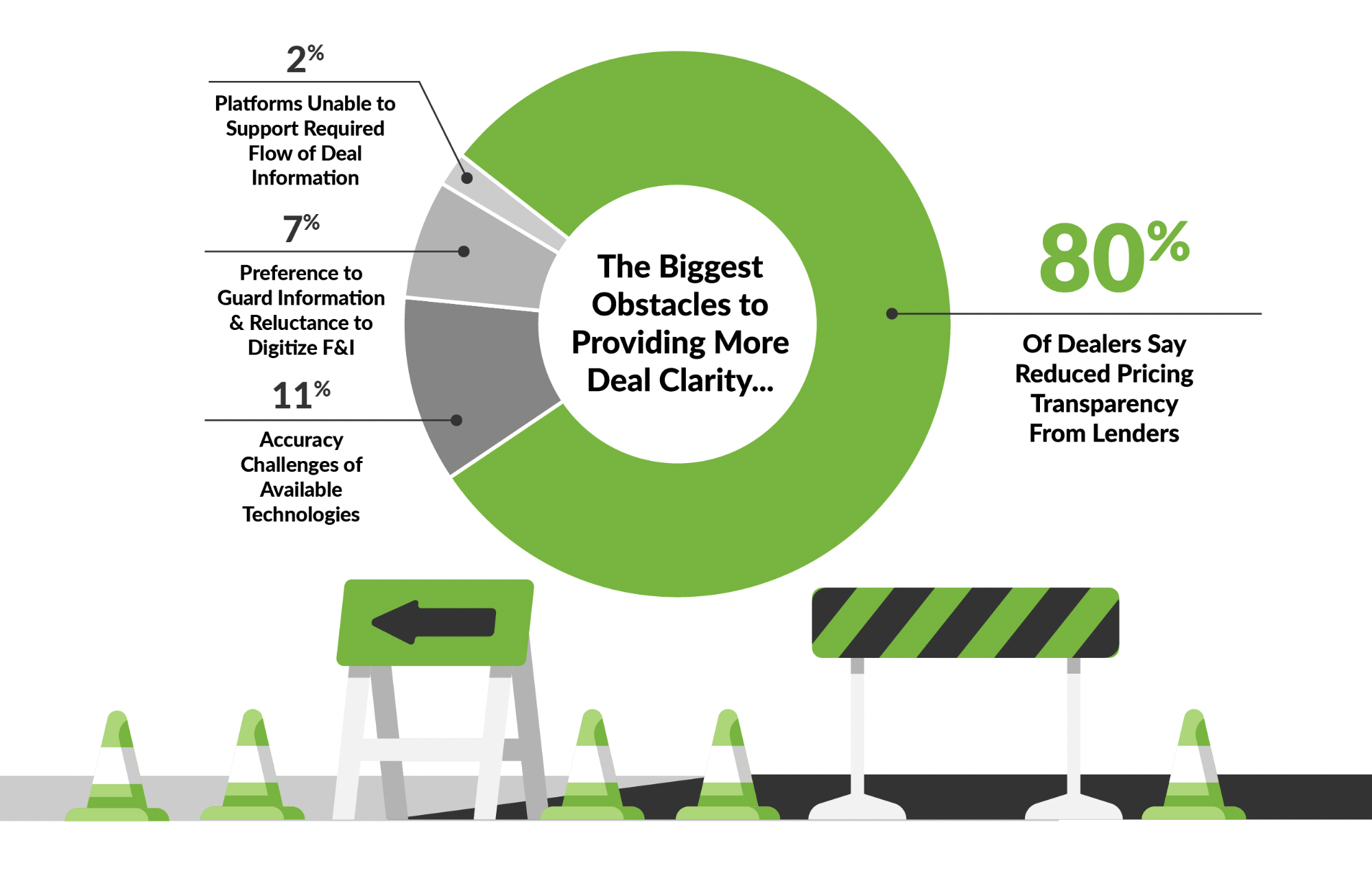 Dealers overwhelmingly are finding themselves caught between a rock – customers’ demand for deal transparency – and a hard place – less transparency from lenders, with 84% surveyed feeling this pain.
Dealers overwhelmingly are finding themselves caught between a rock – customers’ demand for deal transparency – and a hard place – less transparency from lenders, with 84% surveyed feeling this pain.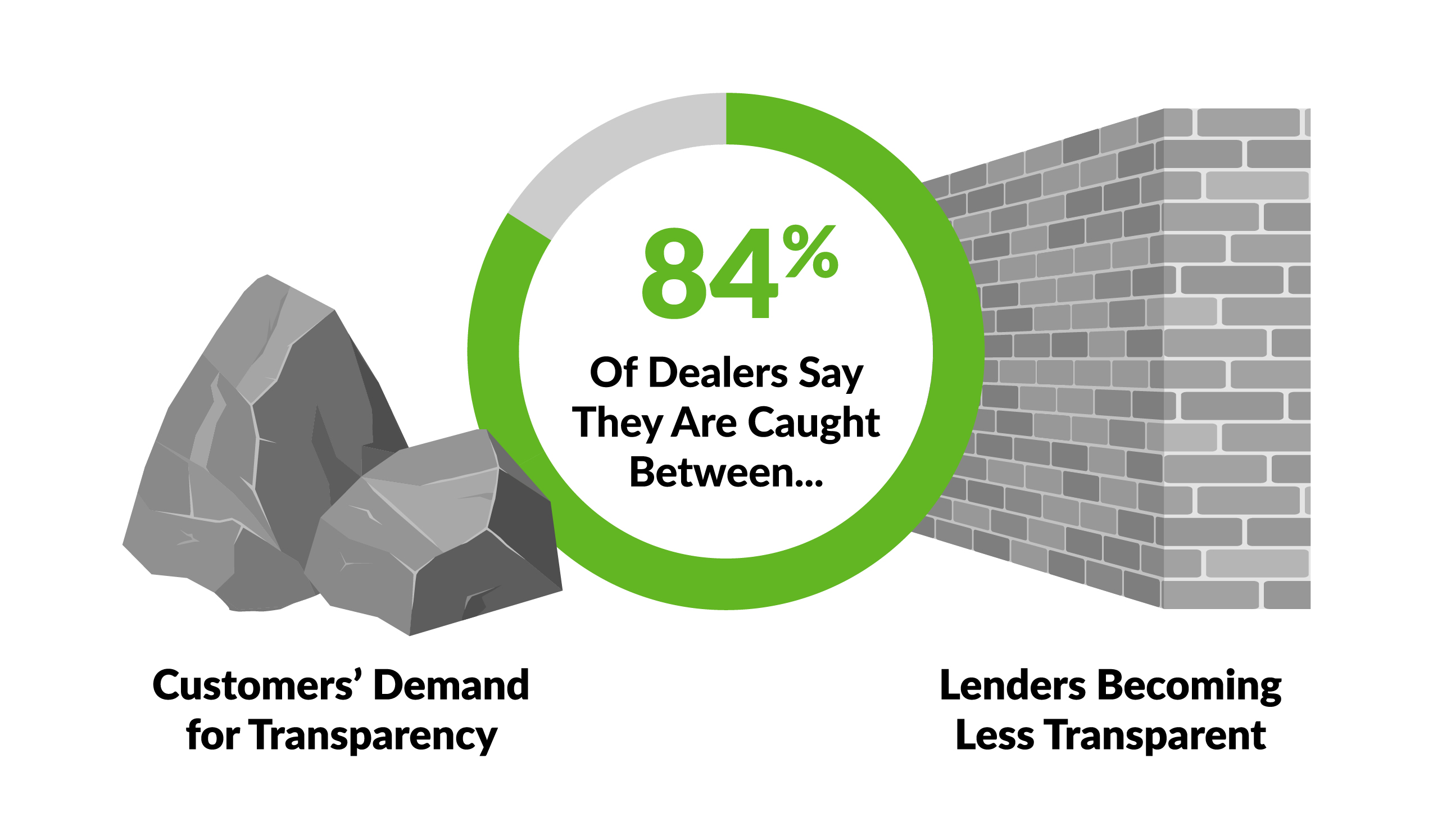
Majority of Customers Want Payments Information Before Scheduling In-store Appointment
Dealers understand the consumers desire for transparency and the perceived non-transparency perpetuates the trust gap, but they have understandable concerns about how transparency will impact profitability – with many believing that transparency and profitability are mutually exclusive.
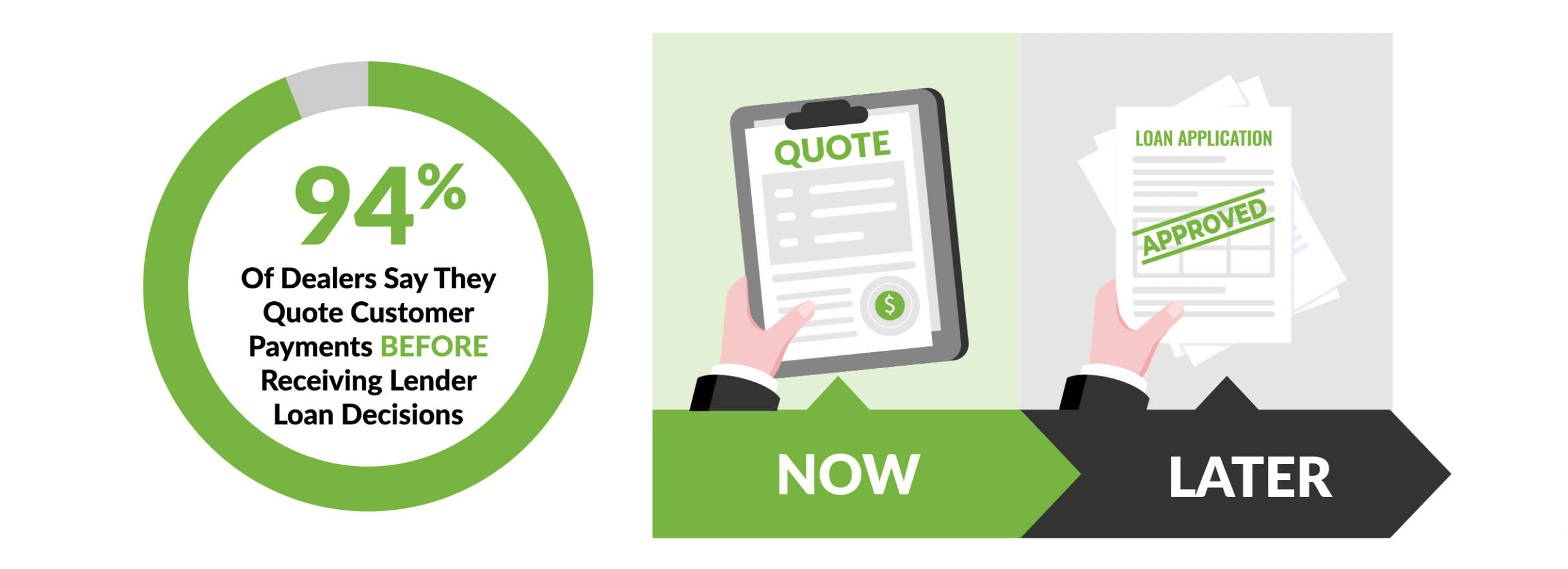
Transparency for consumers means that vehicle pricing and financing information found online is accurate. Most online self-penciling or payment calculator tools, create non transparency – providing unqualified, unrealistic deal information. When the terms cannot be honored in-store, the buyer doesn’t blame the technology, they blame the dealer So, again, the dealer is caught in the middle, and stereotypes are perpetuated, transparency expectations go unmet and the trust gap widens.
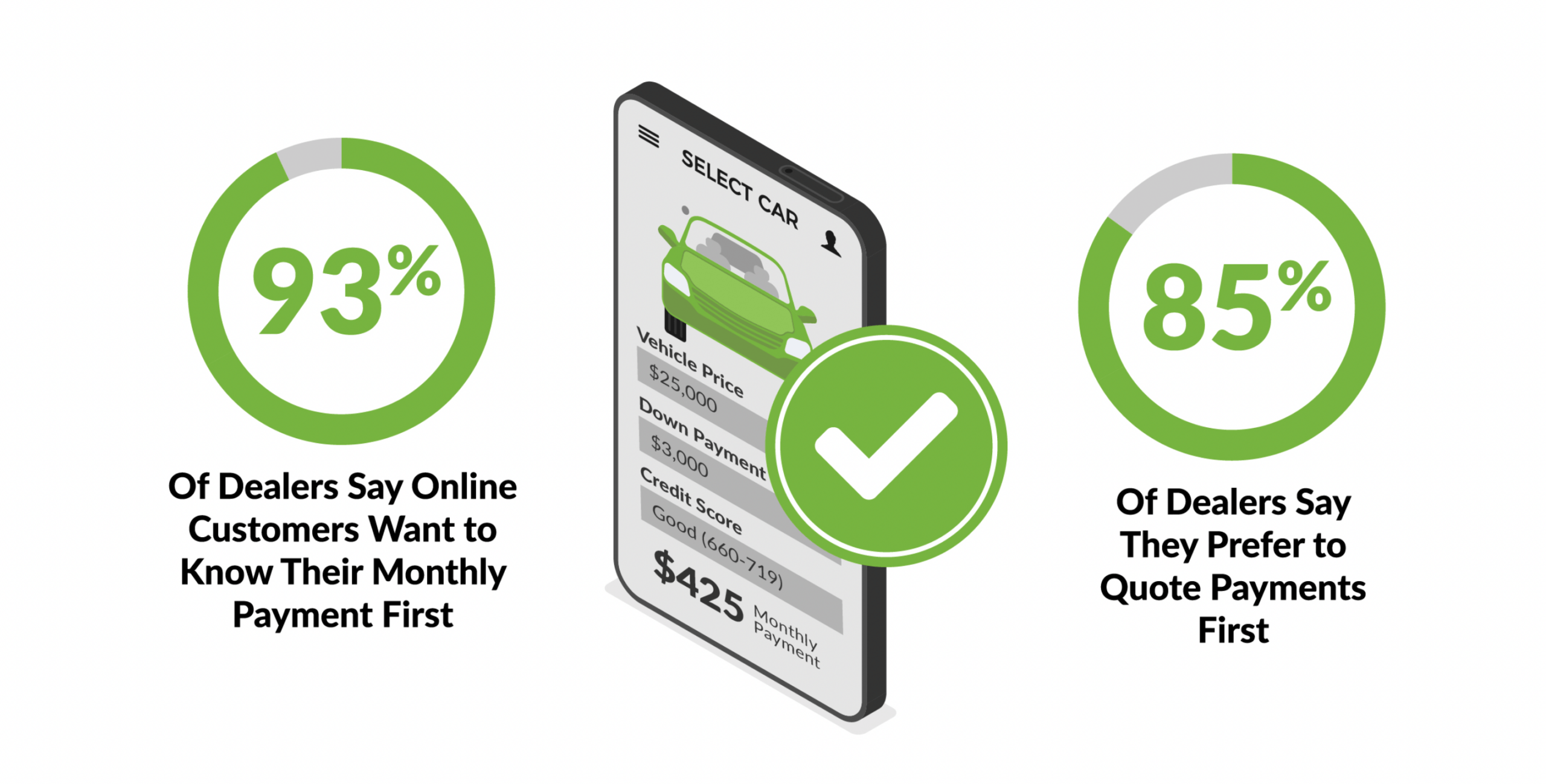
Conclusion
Increased collaboration and communication between lenders and dealers appears to be at the heart of bridging the transparency/trust gap and solving transaction frictions. With more pricing transparency from lenders, dealers may be more willing to evolve legacy practices, resulting in a smoother road to customer satisfaction and frictionless transactions. Part 3 of “The Quest for Transparency in Retail Automotive” infographic series will reveal approaches to bridging the trust gap.
Source: 2023 survey of over 350 auto dealerships across the U.S., fielded by eLEND Solutions
